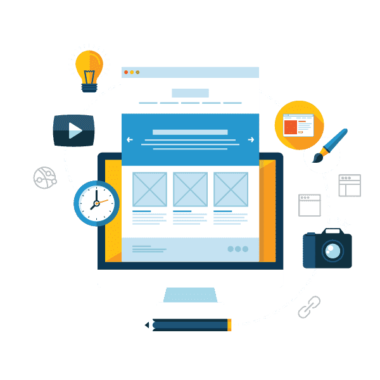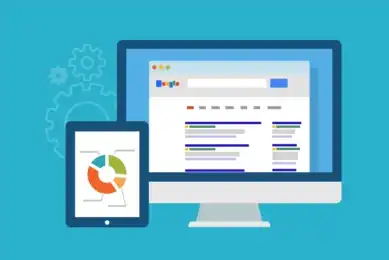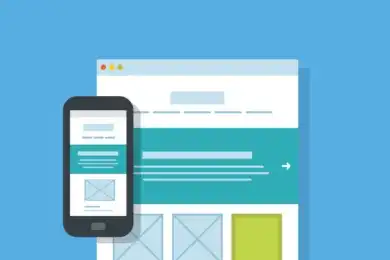
Web Design Services
A website should not simply attract attention. The purpose of a website is to attract and engage the user, as well as to communicate your brand and increase product or service awareness.
Customers will not provide a second opportunity to make a first impression.
In the digital age, first impressions are incredibly important, and an exceptional web design is the key to success. Users enjoy visiting visually attractive and easily navigable websites. Allow our team to assist your website in making an excellent first impression with its quickness and accessibility.
Branding and logo design
Graphic and UI design
Mobile applications design
Our agency will get your business noticed in the digital world by utilising design ingenuity to establish a brand personality with a lasting impression. We offer a variety of modifiable design sets and concentrate on creating a website that fits your brand while engaging your visitors. Our team presents, revises, and collaborates with you until we arrive at the optimal design for your requirements.
We believe that a close working relationship is essential for achieving an exceptional outcome. We collaborate at every stage of the process, beginning with content assessments that assess your needs and requirements and extending to competitive analysis that outlines opportunities.
How do we design websites?
Web design is the process of constructing a website's visual and interactive elements. It involves the planning, design, and implementation of a website's layout, colour schemes, typography, images, and other graphical elements. Here are a few essential elements of web design:
- User Experience (UX) Design focuses on establishing a website that is user-friendly, and intuitive, and provides visitors with a positive experience. It entails identifying the target audience, defining user personas, and designing the site's structure and navigation to ensure simple and effective usability.
- Visual Design Visual design utilises colour schemes, typography, and imagery to create a visually enticing and engaging website. It involves selecting fonts, colours, and images that are consistent with the brand identity and enhance the overall aesthetics of the website.
- The layout design of a website determines how its various elements are organised and presented. It is the process of arranging content, images, and interactive elements in a visually cohesive and harmonious manner. Grid systems and responsive design techniques are used to create layouts that are well-suited to various screen resolutions and devices.
- Typography plays a vital role in web design because it impacts readability and improves the overall visual appeal of a website. Web designers select suitable fonts, font sizes, and line spacing to ensure that text is legible on a variety of devices and screen resolutions.
- Web designers include interactive elements such as icons, menus, forms, sliders, and animations to increase user engagement and interactivity. These elements should be intuitive and aesthetically pleasing while effectively serving their intended purpose.
- Interactive Elements: Web designers incorporate interactive elements like buttons, menus, forms, sliders, and animations to enhance user engagement and interactivity. These elements should be intuitive and visually appealing while serving their intended purpose effectively.
- Prototyping and Wireframing: Prototyping and wireframing are crucial web design phases. They involve creating visual representations or prototypes of the layout and functionality of the website. Before the actual development phase, prototyping tools help designers visualise the user interface and evaluate the usability of the website.
- Branding and Consistency: Web designers ensure that the website's design is consistent with the brand's logo, colour scheme, and overall aesthetic. The site maintains consistency in design elements, such as icons, headers, and fonts, to create a unified and cohesive user experience.
- Accessibility: Web designers consider accessibility guidelines to ensure that people with disabilities can utilise the website. This includes providing alternative text for images, employing appropriate heading structures, and assuring keyboard accessibility.
- Collaboration and Communication Web designers frequently collaborate with clients, stakeholders, and other team members, such as programmers and content creators. Effective communication and collaboration abilities are essential for comprehending project requirements, incorporating feedback, and delivering a design that satisfies the project's objectives.
Web design is an iterative process that requires an understanding of user needs, the creation of visual concepts, the collection of feedback, and the refinement of the design until the final product satisfies both aesthetic and functional requirements.
23
E-commerce solutions
4
Websites for TOP 500 companies
14
Complex intranets for corporations
36
Popular Facebook applications
28
E-mail marketing strategies
47
Experienced Web Development Ninjas
Each endeavour has its own objectives, intended audience, and potential. Successful projects commence with a tried-and-true procedure that identifies and addresses the unexpected.
Our web design projects
See all projectsTell us about your project
Let us help you get your business online and grow it with passion
Get the finest interactive experience possible based on intelligent design and cutting-edge technology in order to flourish online. Are you ready to begin?
Testimonials
See all testimonials






